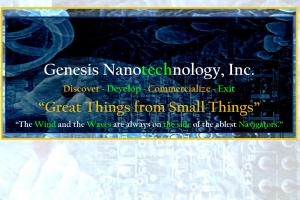
A leading US quantum dot and nanomaterials manufacturer has announced a licensing and manufacturing deal in Assam, India.
The company, Quantum Materials Corp (QMC), has a range of products which can be used to make anything from superior Ultra High Definition television displays to ultra-thin solar cells and more efficient batteries.
The agreement will not only lead to significant job opportunities in the locality of Assam, but is also a major step in deploying QMC’s extraordinary technologies in the region.
There is the opportunity to adopt next-generation solar photovoltaic technology in the area, after the implementation of recent tariffs on imported photovoltaics into India.
QMC’s cadmium-free quantum dots offer a less hazardous and eco-friendlier alternative for producers and consumers, providing them with the color benefit without the risks of toxicity or liability.
The incorporation of cadmium in quantum dots has restricted their adoption, keeping manufacturers from leveraging the benefits of the technology. Restriction of Hazardous Substances regulations currently state that 1,000 parts per million (ppm) cadmium can be used, however this exception will soon expire and only 100 ppm of cadmium will be acceptable. In 2015, the European Parliament banned the continued use of cadmium in display and lighting devices.
 Read More: What are quantum dots? The Science and Applications
Read More: What are quantum dots? The Science and Applications
Furthermore, controls and regulations are growing in Asia, with China implementing new laws of its own.
QMC signed the License and Development Agreement with Amtronics CC to allow for the establishment of large scale, low cost quantum dot production for the development and future commercial manufacture of: ultra-high definition display panels, solid state lighting LEDs and quantum dot driven thin-film solar cells.
The Agreement provides Amtronics CC with the right to manufacture quantum dots and thin-film quantum dot solar cells for commercial supply in India, as well as the right to use the QDXTM trademark and technical data to support its marketing initiatives. Under the terms of the Agreement, QMC receives an immediate upfront license fee of US$1,000,000 in addition to technology development funding, scheduled milestone payments and royalties on all quantum dots/solar cells produced.
The 12,000 square feet nanotech-focused facility is being established as the anchor project within the recently announced Electronics Manufacturing Cluster in the Guwahati Tech City.

“We are extremely pleased to partner with Amtronics CC and Amtron as they establish the necessary infrastructure to support large scale thin-film, quantum dot based solar cell production in Assam India using QMC patented technologies” explained Stephen B. Squires, President and CEO of Quantum Materials Corp.
“India’s recent implementation of tariffs applied to imported solar photovoltaics creates an ideal opportunity to establish QMC’s next generation thin-film photovoltaics for broad adoption in the region. I am highly confident that our technologies will help India fulfill its goal to deploy low cost renewables as a significant step toward energy independence”
Dr. George Anthony Balchin, Managing Director of Amtronics CC added, “We are pleased to be involved and provide the initial US $20,000,000 in funding for this enterprise and are anxious to see these extraordinary technologies deployed in a region that will benefit from both the end product as well as the significant potential for job creation.
The initial capital infusion will be used to build out the facility, purchase all the production and process equipment, including the micro reactors, train the staff and provide the initial working capital. It is very rare and rewarding to be involved with a project that is the culmination of a group of like-minded individuals striving for a common goal that has so much potential to enhance the lives of so many.”
Commenting further QMC CEO Squires stated: “As India represents one of the largest renewable energy and consumer electronics markets in the world, our partnership with Amtronics CC is an important step in expanding the value of the QMC franchise globally. This partnership will allow us to address global challenges such as rising energy costs, energy security, increasing power consumption and environmental quality on a more rapid basis.”

 Ashley Marshall, Erin Sanehira and Joey Luther with solutions of all-inorganic perovskite quantum dots, showing intense photoluminescence when illuminated with UV light. Credit: National Renewable Energy Laboratory
Ashley Marshall, Erin Sanehira and Joey Luther with solutions of all-inorganic perovskite quantum dots, showing intense photoluminescence when illuminated with UV light. Credit: National Renewable Energy Laboratory


 Dr Xiaojing Hao of UNSW’s Australian Centre for Advanced Photovoltaics holding the new CZTS solar cells.
Dr Xiaojing Hao of UNSW’s Australian Centre for Advanced Photovoltaics holding the new CZTS solar cells.

 A new kind of nanoscale rectenna (half antenna and half rectifier) can convert solar and infrared into electricity,
A new kind of nanoscale rectenna (half antenna and half rectifier) can convert solar and infrared into electricity,



You must be logged in to post a comment.